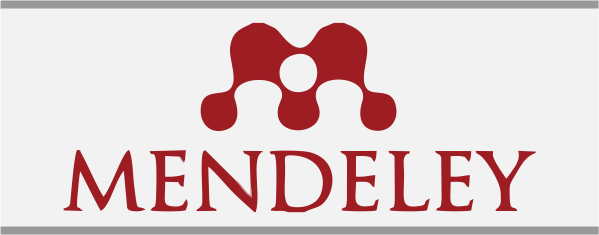PROCESS TYPES IN EFL LEARNERS’ NARRATIVE TEXT: A PORTRAIT ON LINGUISTICS AND GENDER CONNECTIONS
(1) IAIN Syekh Nurjati Cirebon
(2)
(*) Corresponding Author
Abstract
Abstract: This present study explores the female and male EFL learners’ process types in their narrative text to connect the linguistics and gender. According to Bank (2007, 3-4) school help to shape the sex-role socialization theorists: that is, the theory which focuses on how people learn the role of male and female in the society. Thus, this study is intended to: 1) find out the differences between both female and male in term of process types in narrative text, 2) find out the relation between gender of writers and the choice of process types in writing narrative text. This study shows that female EFL learner uses eleven process types; material (37%), attributive intensive (22,6%), mental affection (7,5%), behavioral (7,5%), identifying intensive (6,1%), mental perceptive (5,4%), verbal (4,8%), attributive possessive (4,1%), mental cognition (2,7%), causative (1,3%), and existential process (0,7%). In contrast, the male respondent tends to use and produce only nine kinds of process types in his narrative text. Those process types are the material (47%), Verbal (13,3%), behavioral (12,2%), attributive intensive (8,1%), identifying intensive (5,8%), mental cognition (4,6%), mental perceptive (4%), attributive possessive (3,4%), mental affection processes (1,1%).
Key words: process types, gender,Male EFL learner, Female EFL learner
Full Text:
PDFReferences
Alwasilah, A.C. (2015). Pokoknya Studi Kasus: Pendekatan Kualitatif. Bandung: Kiblat Buku Utama.
Archer, J., and Llyod, B. (2002). Sex and Gender. 2nd Edition. New York: Cambridge University Press.
Ary, D., and Jacobs, L. C., and Razavieh, A., and Sorensen, C. (2010). Introduction to Research in Education. 8th Edition. Belmont: Thomson Wadsworth.
Bank, B. J. (2007). Gender and Education: An Encyclopedia, Volumes I & II. London: An Imprint of Greenwood Publishing Group.
Berg, B.L. (2001). Qualitative Research Methods for the Social Sciences. Boston: Pearson.
Burr, V. (1998). Gender and Social Psychology. London: Routledge.
Coates, J. (2004). Women, Men and Language: A Sociolinguistic Account of Gender Differences in Language. 3rd Edition. New York: Routledge.
Creswell, J. W. (2014). Research Design: Qualitative, Quantitative, and Mixed Methods Approaches Fourth Edition. California: SAGE Publications.
Dawson, C. (2007). A Practical Guide to Research Methods: A User Friendly Manual for Mastering Research Techniques and Projects Third Edition. United Kingdom: How to Books.
Dornyei, Z. (2007). Research Methods in Applied Linguistics: Quantitative, Qualitative, and Mixed Methodologies. New York: Oxford University Press.
Doyle, M. (1998). Introduction to the A-Z of Non- Sexist Language. In Cameron, D (1998). (Ed). The Feminist Critique of Language: A Reader. New York: Routledge.
Eckert, P., and McConnell-Ginet, S. (2003). Language and Gender. Cambridge: Cambridge University Press.
Eggins, S. (2004). Anintroduction to systemic functional linguistics. 2nd Edition. London: Continuum International Publishing Group.
Emilia, E. (2014). Introduction Functional Grammar. Bandung: Pustaka Jaya.
Fairclough, N. (2003). Analysing Discourse Textual Analysis for Social Research. London: Routledge.
Flick, U. (2009). An Introduction to Qualitative Research fourth edition. London: SAGE Publications Ltd.
Fontecha, A. F. (2010). Gender and Motivation in EFL Vocabulary Production. In Catalan, R. M J (2010). (Ed). Gender Perspectives on Vocabulary in Foreign and Second Languages. New York: Palgrave Macmillan.
Fraenkel, J. R. and Wallen, N. E. and Hyun, H. H. (2012). How to Design and Evaluate Research in Education. New York: McGraw-Hill.
Gee, J. P. (2011). An Introduction to Discourse Analysis: Theory and Method. 3rd Edition. New York: Routledge.
Gillham, B. (2000). Case Study research Methods. London: Continuum
Gray, P. S., and Williamson, J. B., and Karp, D. A., and Dalphin, J. R. (2007). The Research Imagination: An Introduction to Qualitative and Quantitative Methods. New York: Cambridge University Press.
Griffiths, P. (2006). An Introduction to English Semantics and Pragmatics. Great Britain: Edinburgh University Press Ltd.
Halliday, M.A.K. (1994). An Introduction to Functional Grammar. 2nd Edition. London: Edward Arnold.
Halliday, M.A.K., and Matthiessen, M.I.M. (2004). An Introduction to Functional Grammar. 3rd Edition. London: Oxford University Press Inc.
Halliday, M.A.K., and Matthiessen, M.I.M. (2014). Halliday’s Introduction to Functional Grammar. 4rd Edition. New York: Routledge.
Hart, C. (2010). Critical Discourse Analysis and Cognitive Science: New Perspectives on Immigration Discourse. New York: Palgrave Macmillan.
Hidayat, R. S. (2004). Penulisan dan Gender. Sosial Humaniora, 08 (01): 09-15.
Holmes, M. (2009). Gender and Everyday Life. London: Routledge.
Hyde, J. S., and McKinley N. M. (1997). Gender Differences in Cognition:Results from Meta-Analyses. In Caplan, P. J. Crawford., and M. Hyde, J. S.,and Richardson, J. T. E (1997). (Ed). Gender Differences in Human Cognition. New York: Oxford University Press.
Hyland, K. (2009). Teaching and Researching Writing. 2nd Edition. United Kingdom: Pearson Education Limited.
Johnstone, B. (1993). Community and Contest: Midwestern Men and Women Creating Their Worlds in Conversational Storytelling. In Tannen, D (1993). (Ed). Gender andConversational Interaction. New York: Oxford University Press.
Johnstone, B. (2001). Discourse Analysis and Narrative. In Schiffrin, D. Tannen, D. Hamilton, H. E (2001). (Ed). The Handbook ofDiscourse Analysis. UK: Blackwell Publishers.
Jule, A. (2004). Gender, Participation and Silence in the Language Classroom: Sh-shushing the Girls. New York: Palgrave Macmillan.
Klarer, M. (1999). An Introduction to Literary Studies. London & New York: Routledge.
Knapp, P., and Watkins, M. (2005). Genre, Text, and Grammar: Technologies for Teaching and Assessing Writing. Sydney: A UNSW Press book.
Lakoff, R. (1975).Language and Women’s Place. New York: Harper & Row Publisher
Levin, B. (1993). English Verb Classes and Alternations. Chicago and London: The University of Chicago Press.
Li, J. (2014). A Sociolinguistic Study of Language and Gender in Desperate Housewives.Theory and Practice in Language Studies, 04 (01): 52-57.
Lodico, M. G., and Spaulding, D. T., and Voegtle, K. H. (2006). Methods in Educational Research from Theory to Practice. San Francisco: Jossey-Bass A Wiley Imprint.
Mackey, A., and Gass, S. M. (2005). Second Language Research Methodologyand Design. New Jersey: Lawrence Erlbaum Associates, Inc., Publishers.
Mahmud, M. (2010). Language and Gender in English Language Teaching. TEFLIN Journal, 21 (2): 172-185
Mason, J. (2002). Qualitative Researching Second Edition. London: SAGE Publications.
Mayr, A. (2008). Language and Power: An Introduction to Institutional Discourse. London: Continuum.
McCarthy, M. (1991). Discourse Analysis for Language Teachers. Cambridge: Cambridge University Press.
McKay, S.L. (2008). Researching Second Language Classrooms. New Jersey: Lawrence Erlbaum.
Meyer, E. J. (2010). Gender and Sexual Diversity in Schools: An Introduction. New York: Springer Science+Business Media B.V.
Meyerhoff, M. (2006). Introduction Sociolinguistics. New York: Routledge.
Mohamadi, Z. (2014). A Comparative Study of Apologetic E-mails Used by Males and Females Iranian EFL Learners Compared to English Native Speaking Students. Theory and Practice in Language Studies, 04 (01): 142-205.
Moss, G. (2007). Literacy and Gender: researching texts, contexts and readers. USA and Canada: Routledge.
Paltridge, B (2000).Making Sense of Discourse Analysis. Queensland: Gerb Stabler.
Paltridge, B (2006).Discourse Analysis: An Introduction. New York: Continuum.
Porter, N. (2005). Psychological Gender Differences Contemporary Theoriesand Controversies. In Barnes, A (2005). (Ed). The Handbook ofWomen, Psychology,and the Law. San Francisco: Jossey-Bass A Wiley Imprint.
Priyana, J., and Machfutra, E. D., and Muhammad, Z. A. (2008). Interlanguage: English for Senior High School XII Language Study Programme. Jakarta: Pusat Perbukuan Departemen Pendidikan Nasional
Priyana, J., and Renitasari, V., and Irjayanti, A. R. (2008). Interlanguage: English for Senior High School Students X. Jakarta: Pusat Perbukuan Departemen Pendidikan Nasional.
Ridgeway, C. L. (2011). Framed by Gender: How Gender Inequality Persists in the Modern World. New York: Oxford University Press.
Schiffrin, D., and Tannen, D., and Hamilton, H. E. (2001). Introduction. In Schiffrin, D. Tannen, D. Hamilton, H. E (2001). (Ed). The Handbook ofDiscourse Analysis. UK: Blackwell Publishers.
Sunderland, J. (2006). Language and Gender An advanced resource book.New York: Routledge Taylor & Francis Group.
Tahriri, A. (2011). Male and Female EFL Learners’ Self-Perceived Strategy Use acrossVarious Educational Levels: A Case Study. English Language Teaching, 04 (04):181-194.
Tannen, D. (1993). Gender and Conversational Interaction. Oxford: Oxford University Press.
Tannen, D. (1994). Gender and Discourse. New York: Oxford University Press .
Tannen, D. (2003). Gender and Family Interaction. In Holmes, J. Meyerhoff, M (2003). (Ed). The Handbook of Language and Gender. UK: Blackwell Publishing Ltd.
Ulfa, R. L. (2015). Gender Inequality: IRF Pattern in English as a Foreign Language Classroom. An undergraduate thesis submitted to the English Language Teaching Department of Syekh Nurjati State Islamic Institute Cirebon.
Van Dijk, T.A. (2009). Society and Discourse: How Social Contexts Influence Text and Talk. Cambridge:Cambridge University Press.
Wardhaugh, R. (2010). An Introduction to Sociolinguistics. 6th Edition. UK: Blackwell Publishing Ltd.
Wardhaugh, R., and Fuller, J. M. (2015). An Introduction to Sociolinguistics. 7th Edition. UK: Blackwell Publishing Ltd.
Wilkinson, L. C., and Marrett, C. B. (1985). Gender Influences in Classroom Interaction. Florida: Academic Press, Inc.
Wodak, R. (2001). What CDA is about - a summary of its history, important concepts and its developments. In Wodak, R. and Meyer, M (2001). (Ed). Methods of Critical Discourse Analysis. London: SAGE Publications Ltd.
Wodak, R. (2011). Critical Discourse Analysis. In Hyland, K. and Paltridge, B (2011). (Ed). Continuum Companion to Discourse Analysis. New York: Continuum International Publishing Group.
Woofitt, R. (2005).Conversation Analysis and Discourse Analysis: A Comparative and Critical Introduction. London: SAGE publications.
Yan, H. (2009). Empirical Study on Relations between Gender Differences and English Vocabulary and the Overall Proficiency Level. Asian Social Science, 05 (10): 109-114.
DOI: 10.24235/eltecho.v1i1.969
Article Metrics
Abstract view : 663 timesPDF - 453 times
Refbacks
- There are currently no refbacks.
This Journal is indexed by:

This work is licensed under a Creative Commons Attribution 4.0 International License.







